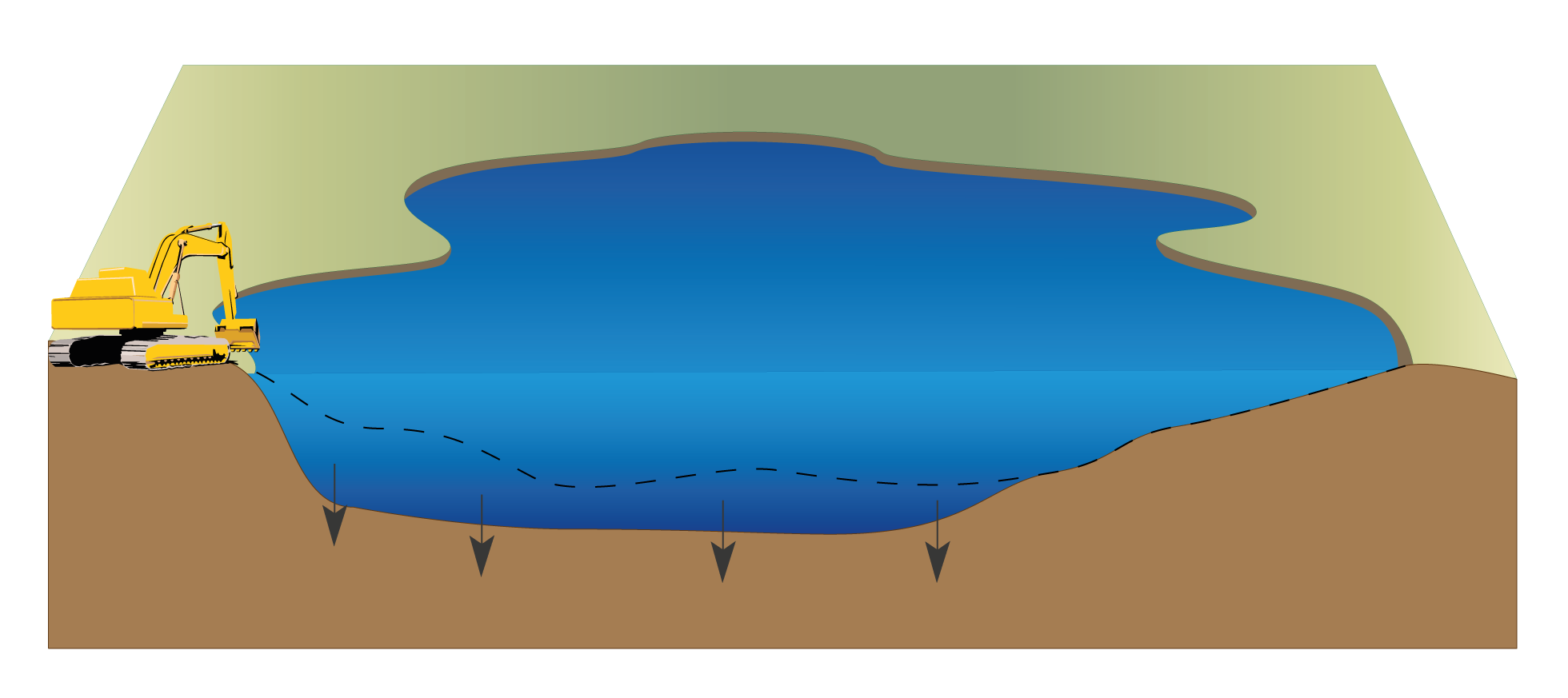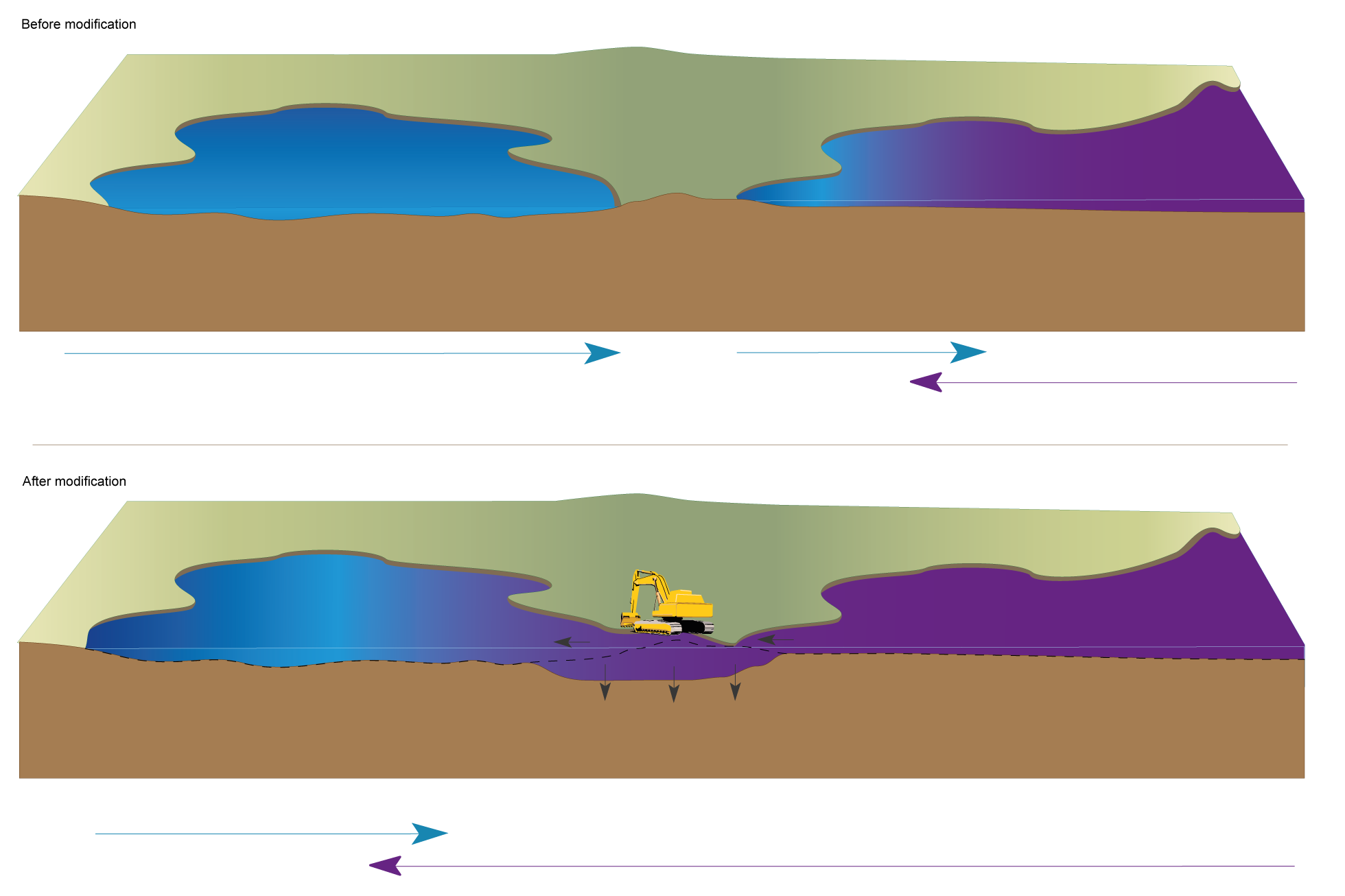|
|
ExcavationExcavation refers to activities that remove soil and/or rock often increasing wetland extent and/or depth and water persistence. Quick links
Excavation – Excavation outside a channelSelect from the tabs below Excavation in a palustrine or lacustrine wetlandExcavation in a palustrine or lacustrine wetland increases the extent and/or depth and may increase the persistence of water in the wetland. In some cases, excavation in a palustrine wetland may increase wetland extent and depth to such a degree that the wetland is converted to a lacustrine wetland system. Applicable Wetland Habitat Hydrological Modification:
Excavation causing conversion to an intertidal wetlandExcavation in a palustrine or lacustrine wetland increases the extent and/or depth of the wetland but also enables tidal inundation. The wetland is converted to an intertidal wetland. Applicable Wetland Habitat Hydrological Modification:
Excavation in an intertidal wetlandExcavation in an intertidal wetland increases the extent and/or depth of the wetland but does not restrict tidal inundation. Applicable Wetland Habitat Hydrological Modification:
Last updated: 7 June 2023 This page should be cited as: Department of Environment, Science and Innovation, Queensland (2023) Excavation – Excavation outside a channel, WetlandInfo website, accessed 8 May 2025. Available at: https://wetlandinfo.des.qld.gov.au/wetlands/ecology/processes-systems/anthropogenic/hydro-concept-mod/excavation/out-channel.html |

 — Department of the Environment, Tourism, Science and Innovation
— Department of the Environment, Tourism, Science and Innovation




